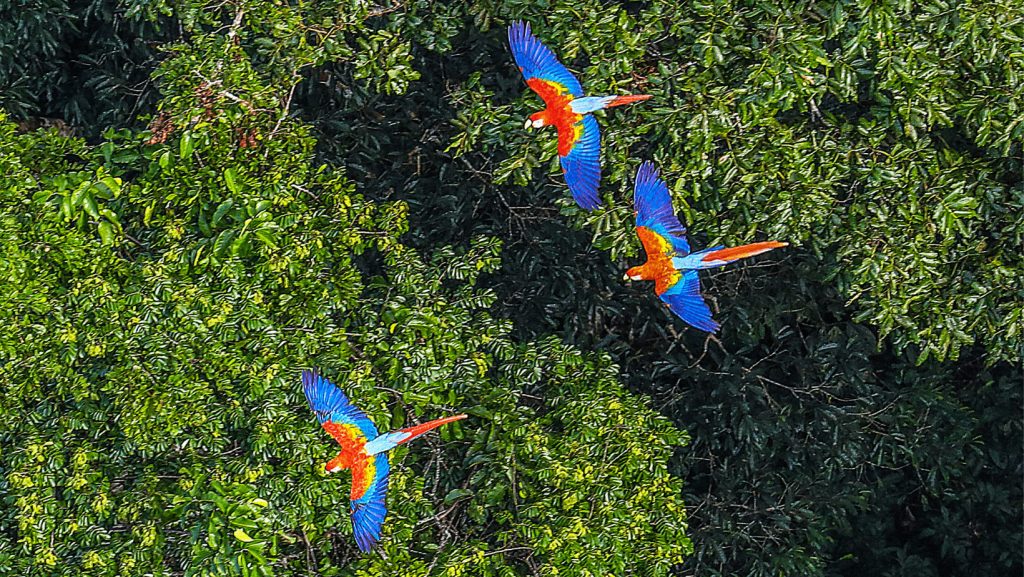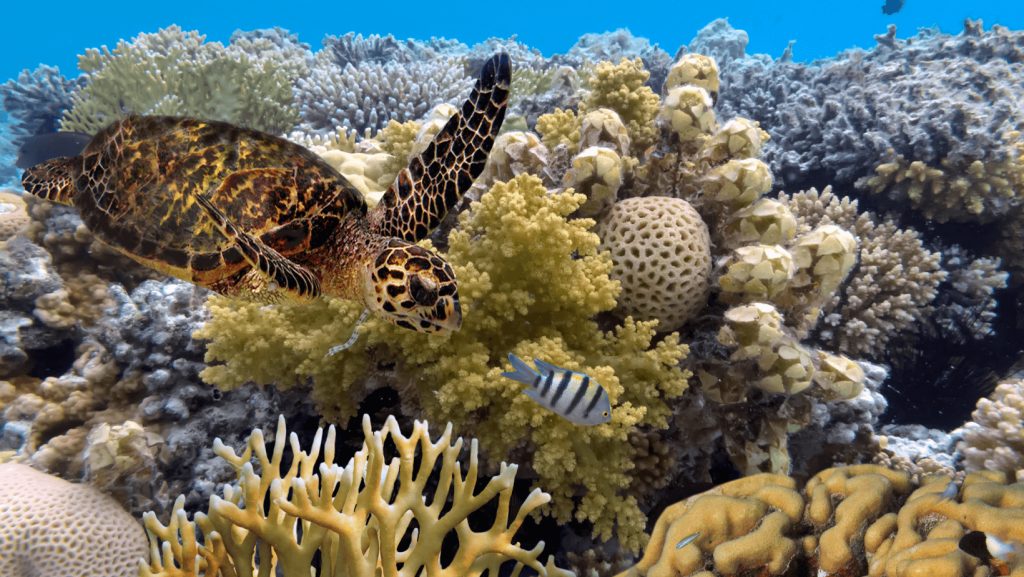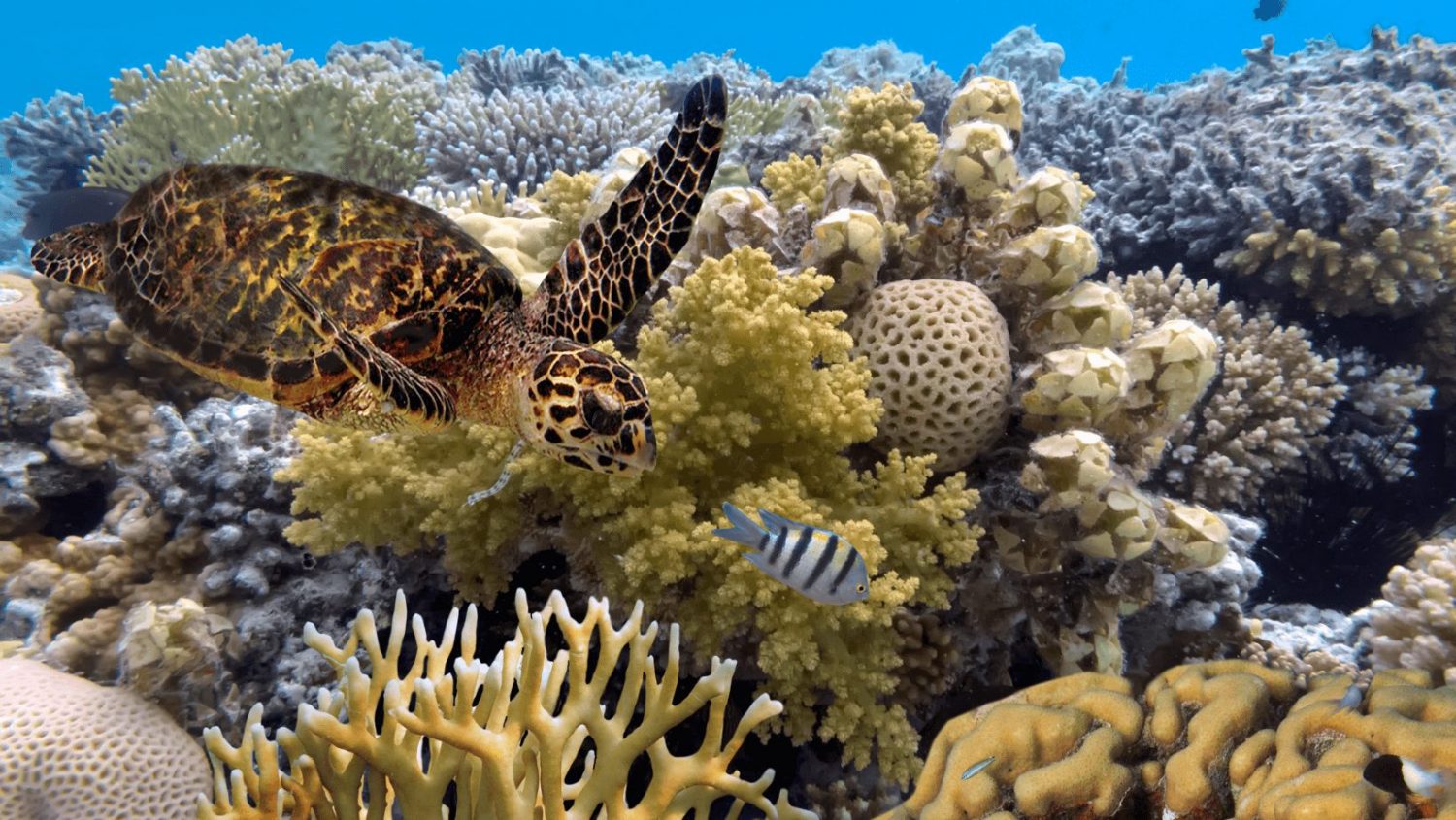
A Treasure Trove Of Species
Spanning a total of eight countries throughout South America, the Amazon is the world’s largest rainforest and river system, and the most biologically diverse place on Earth. It contains millions of species, most of which are still uncataloged.
There are some incredibly unique animals found in the Amazon. The capybara, the largest living rodent in the world, lives in the Amazonian wetlands. It’s also home to the sloth, an animal known for its slow-paced movements. Even the sloth’s digestive system works slowly — it can take them up to a month to digest food. And, of course, there’s the massive anaconda. The anaconda is the world’s heaviest snake species, weighing up to 550 pounds.
Tropical rainforests are also the source of many everyday items we rely on, including foods like chocolate, cashews, Brazil nuts, vanilla, avocados, and bananas. Some medicines even originate there, as 70% of the plants that have proven anti-cancer properties are only found in tropical rainforests.

A Refuge For Marine Life
Located off the coast of Queensland, Australia, the Great Barrier Reef is the world’s largest coral reef system composed of over 2,900 individual reefs and 900 islands. In fact, it’s also the largest living structure on the planet — the reef is so massive, it’s visible from space.
The Great Barrier Reef is home to thousands of species of marine life, including six of the world’s seven species of marine turtle. It’s home to most of the world’s dugongs, a relative of the manatee that’s more closely related to elephants than some other marine mammals, like whales and dolphins. The blanket octopus can also be found in the Great Barrier Reef. A male blanket octopus weighs 40,000 times less than a female, giving this species the largest gender size discrepancy in the animal kingdom.
In addition to the biological and cultural importance of the Great Barrier Reef, it also has an incredible economic impact. It directly supports over 39,000 jobs, mostly related to tourism, fishing, recreational, and scientific activities. This means that the Great Barrier Reef provides more job opportunities for Australians than many of the country’s largest companies like Qantas (26,000) and National Australia Bank (34,000).
An American Icon
An estimated 5.9 million people visited the Grand Canyon in 2019. This makes it the country’s second most visited national park behind the Great Smoky Mountains of North Carolina and Tennessee. It’s come a long way from the 44,173 visitors that attended a hundred years earlier when it was first designated as a national park in 1919.
The Grand Canyon is appropriately named as it’s larger than the state of Rhode Island, which measures 1,904 square miles and 1,212 square miles respectively. It has an average depth of one mile, and it took the Colorado River an estimated 6 million years to carve it out.
The Grand Canyon is home to a variety of wildlife including seven endangered species. And if you’re afraid of snakes, beware — six different rattlesnake species can be found inside the park. That includes the Grand Canyon pink rattlesnake, which can only be found within the park’s boundaries.

